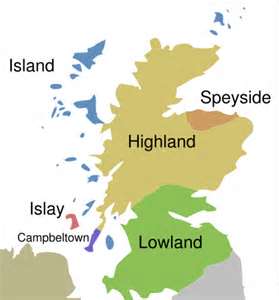Scotland’s Picts and their prehistoric ancestors brewed heather-flavored ale from barley malt as far back as 2000 BC. It was unstable and low in alcohol but served its purpose. When Irish monks arrived in the ninth century bringing both religion and primitive stills, Picts found these stills could turn heather ale into a more stable and potent beverage. Such was the origin of Scotch whisky.
Whisky was treated as just another farm product while Scottish kings ruled the country from Edinburgh. When England, Wales, and Scotland became the United Kingdom in 1707, the London government soon levied excise taxes on Scottish-made whisky. This led to a significant rise in illegal distillation and some present-day Scottish distilleries have their origins in such illicit operations.
The Industrial Revolution of the early 1800s led to building of new and more modern distilleries. These licensed facilities kiln-dried malted barley over smoky peat fires to give their whisky a unique and recognizable taste. Production efficiencies of these larger scale operations and the consistent, distinctive taste of the product eventually drove the moonshiners out of business.
Introduction of column stills in the 1830s led to creation of grain whisky from unmalted grains such as corn. The bland grain whisky mixed with Scotch malt whisky toned down its smoky character, and thus blended Scotch whiskies came to be in the late 1860s. Their milder taste proved more popular with foreign customers and led to the five types of Scotch whisky we know today:
- Single Malt Scotch whisky is produced from only water and malted barley at a single distillery by batch distillation in pot stills.
- Single Grain Scotch whisky is made at a single distillery and may include whole grains of other malted and unmalted cereals in addition to water and malted barley. “Single Grain” means one distillery produced the whisky, not that it was made from one grain.
- Blended Malt Scotch whisky is a blend of two or more Single Malt Scotch whiskies from different distilleries.
- Blended Grain Scotch whisky is a blend of two or more Single Grain Scotch whiskies from different distilleries.
- Blended Scotch whisky is a blend of one or more Single Malt Scotch whisky with one or more Single Grain Scotch whisky.
Scotland has five whisky regions each with its own distinctive style:
 Highland malt whiskies are generally aromatic, smooth, and medium-bodied with tastes ranging from complex to delicately flora. Distilleries: Dalmore, Dalwhinnie, Glenmorangie, among others.
Highland malt whiskies are generally aromatic, smooth, and medium-bodied with tastes ranging from complex to delicately flora. Distilleries: Dalmore, Dalwhinnie, Glenmorangie, among others.- Lowland malt whiskies are light-bodied, relatively sweet and delicate. The three Lowland distilleries are Auchentoshan, Bladnoch, and Glenkinchie.
- Islay, an island off Scotland’s west coast, produces intensely smoky and pungent malt whiskies with a distinctive iodine or medicinal tang said to come from sea-air salt permeating local peat used to dry the barley malt. Distilleries: Bowmore, Bunnahabhain, and Laphroaig, among others.
- Campbeltown produces spicy and salt-tinged malt whiskies from three distilleries: Glen Scotia, Glengyle, and Springbank.
- Speyside malt whiskies are rich, smooth, and full-bodied. Speyside has the largest number of distilleries including the most popular and familiar: Glenfiddich, Glenlivit, and The Macallan.
_______________
“We borrowed golf from Scotland as we borrowed whisky. Not because it is Scottish, but because it is good.” — Horace Hutchinson
“For her fifth wedding, the bride wore black and carried a Scotch and soda.” — Phyllis Batelle
